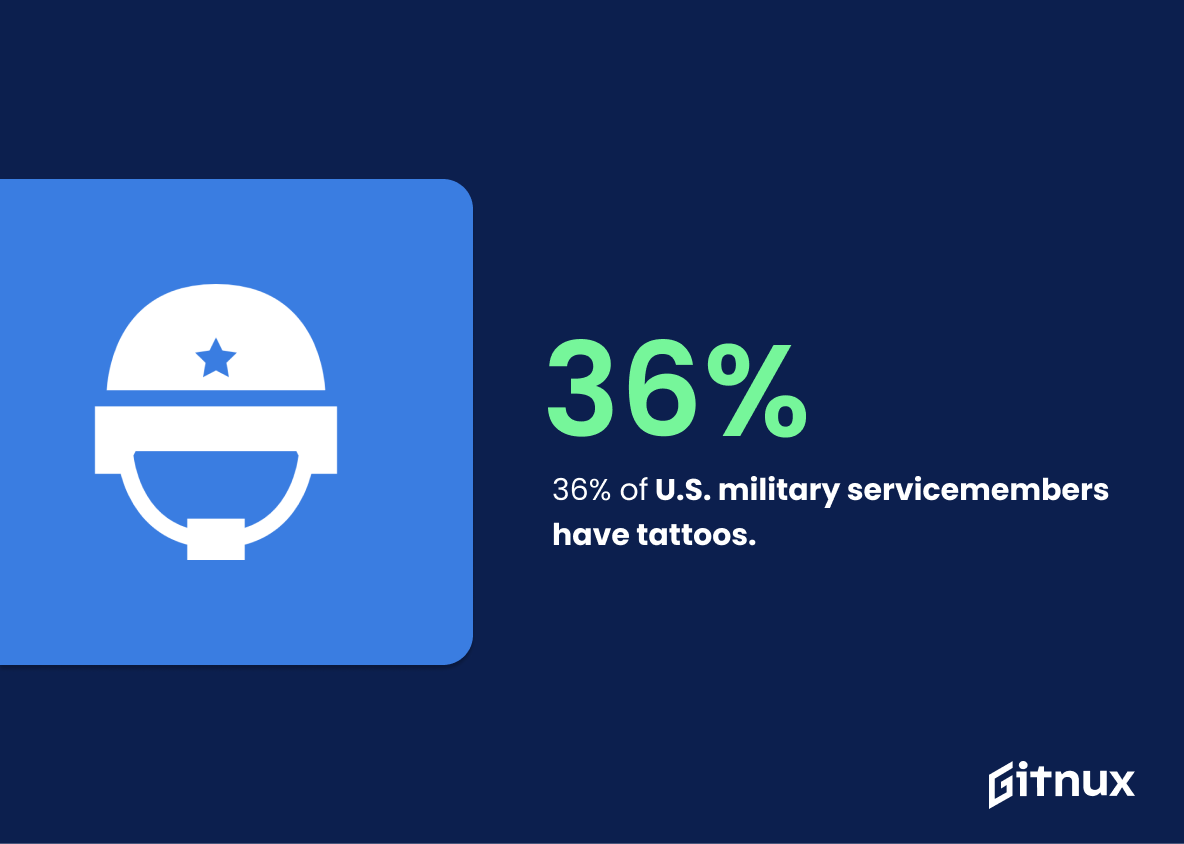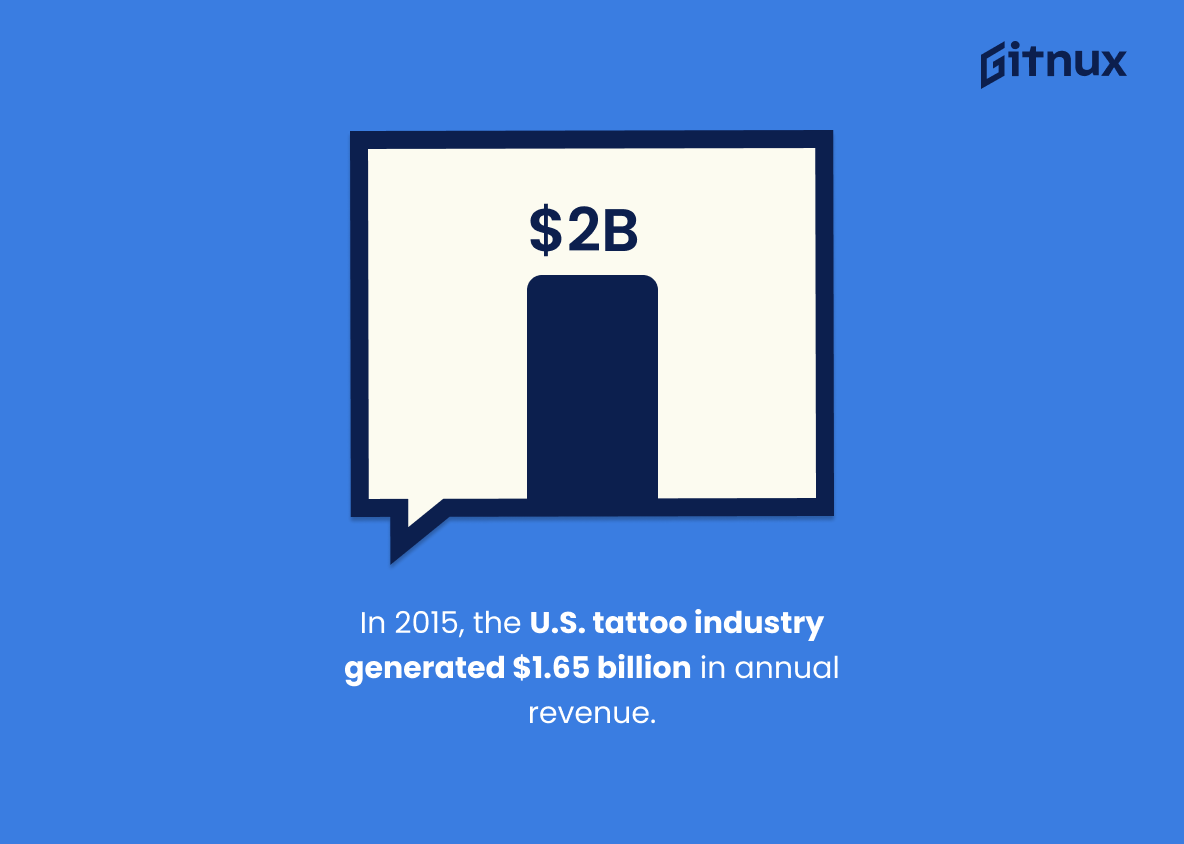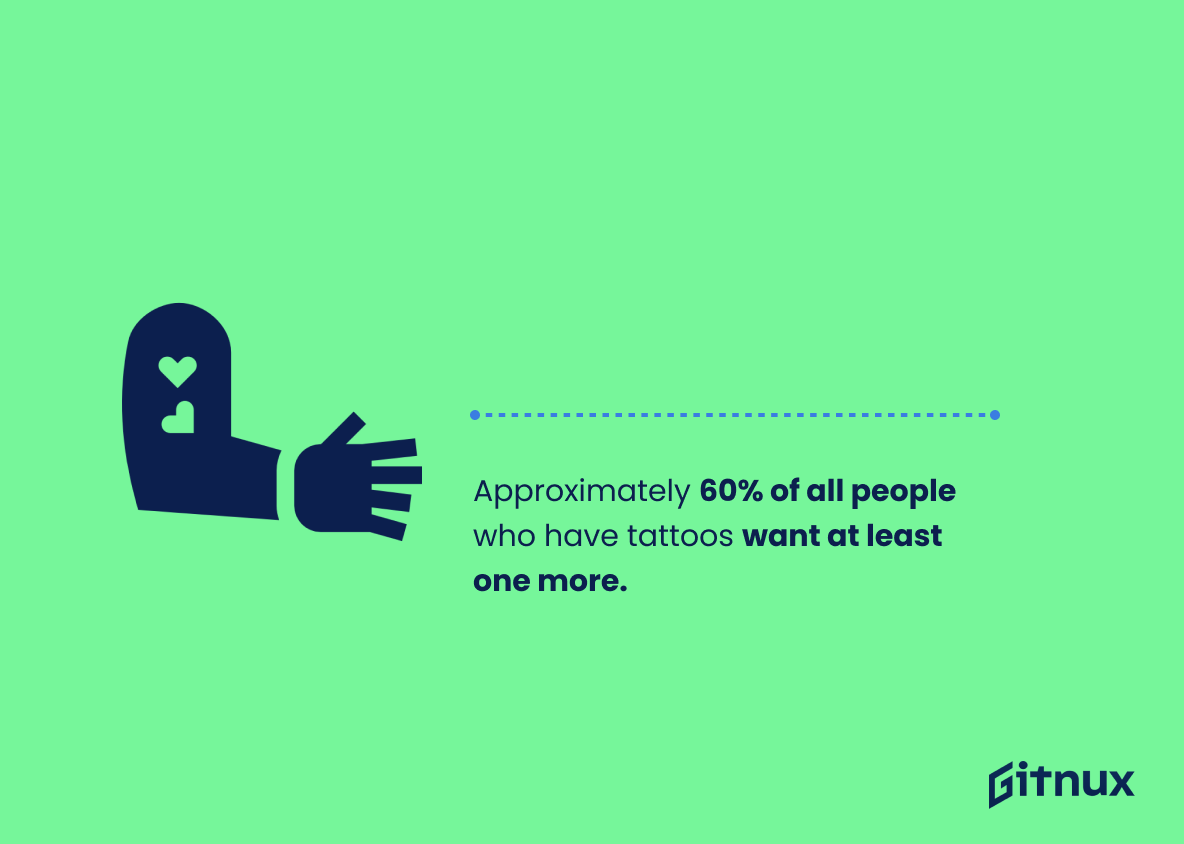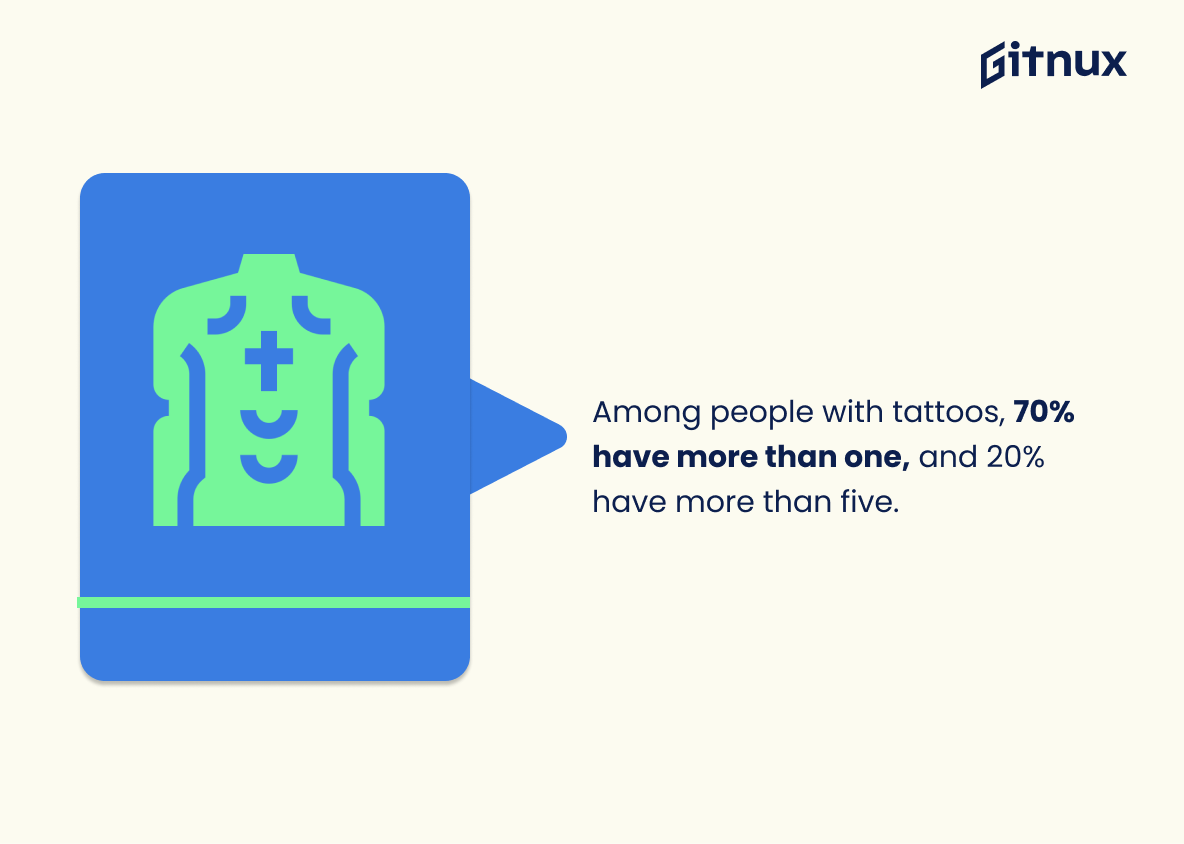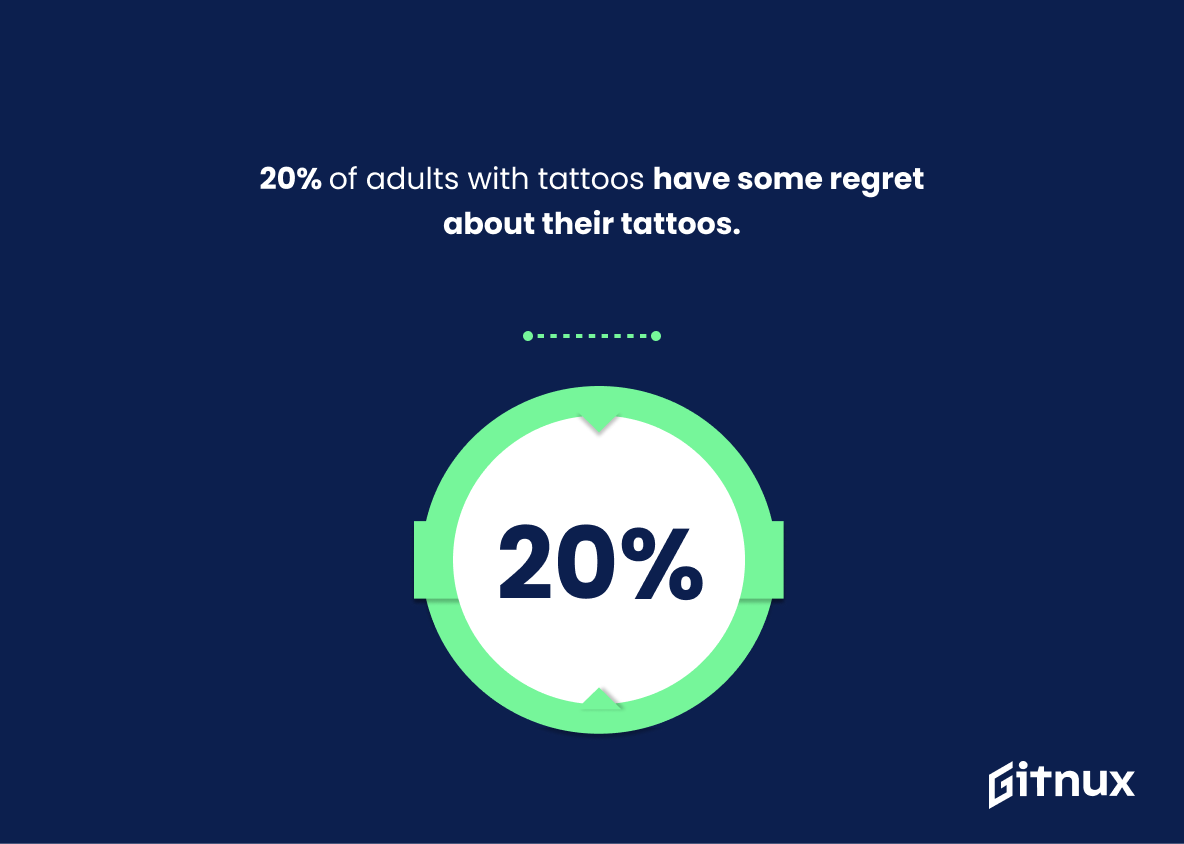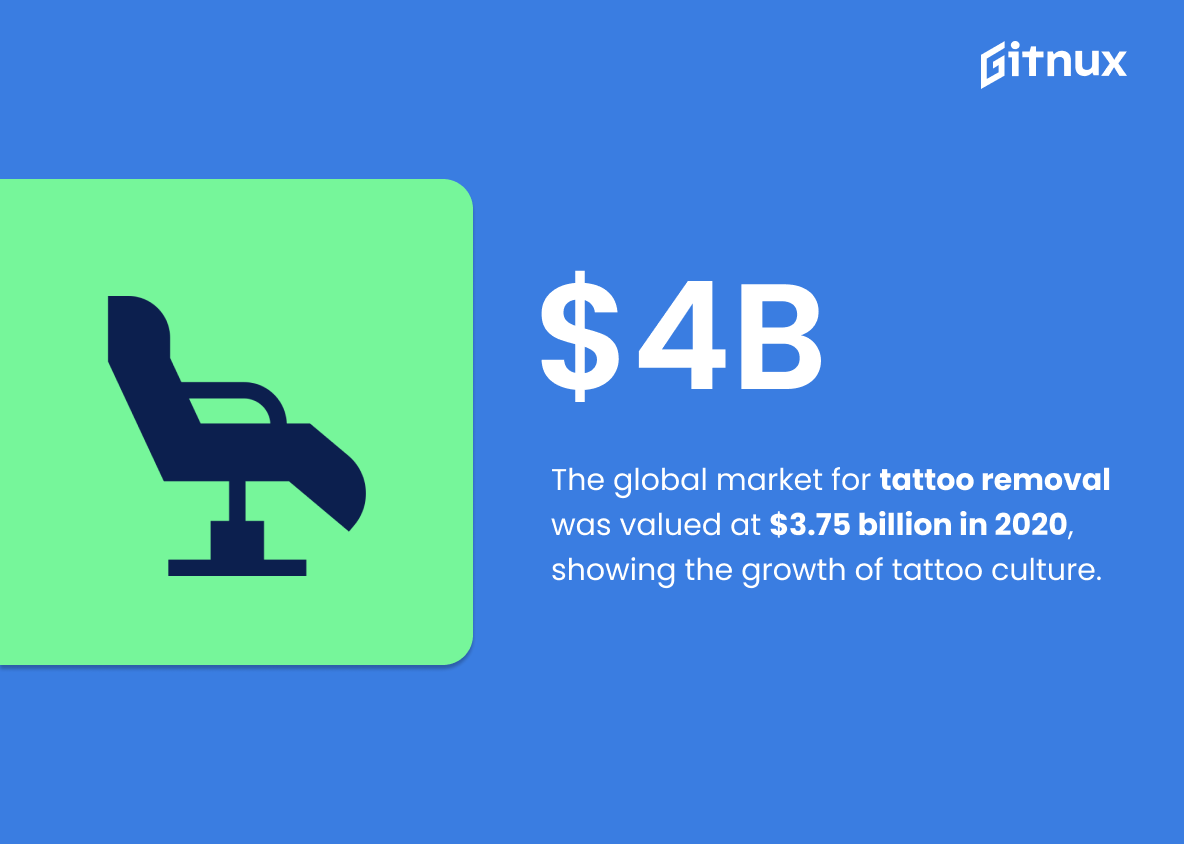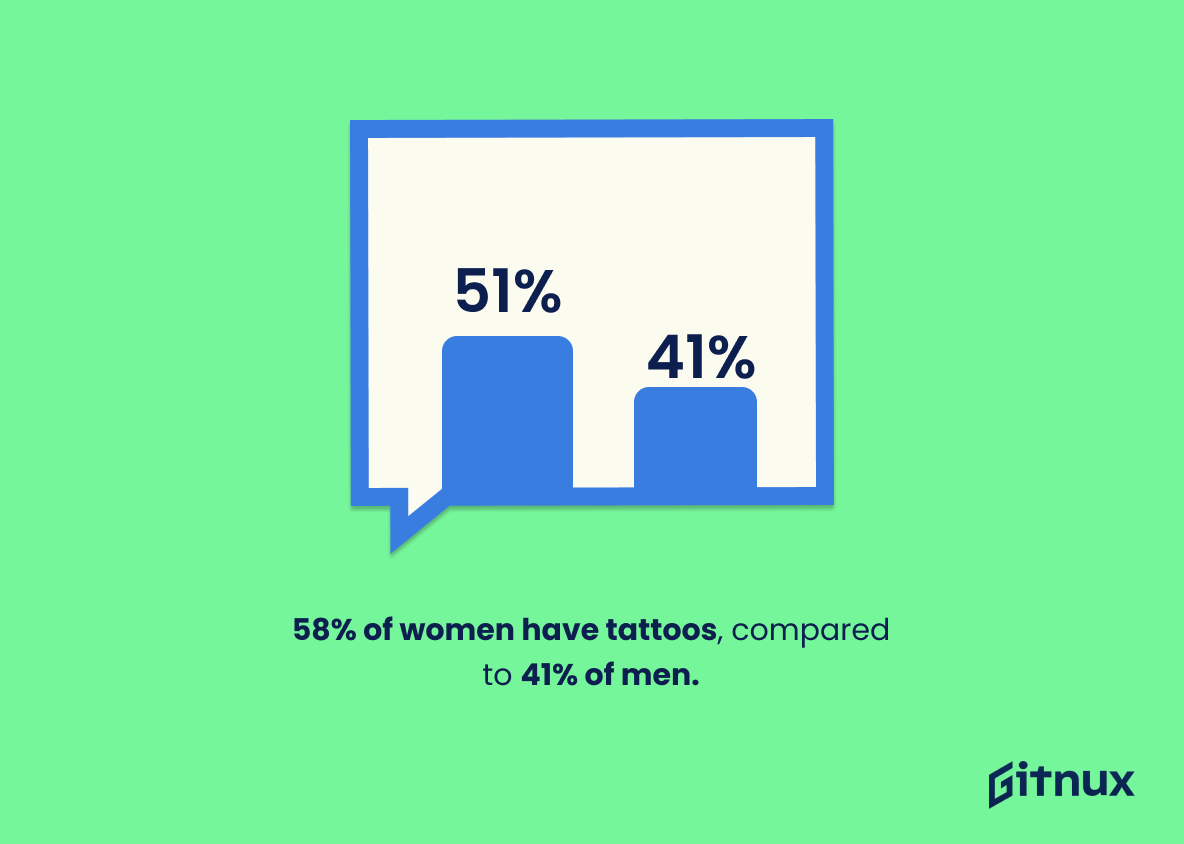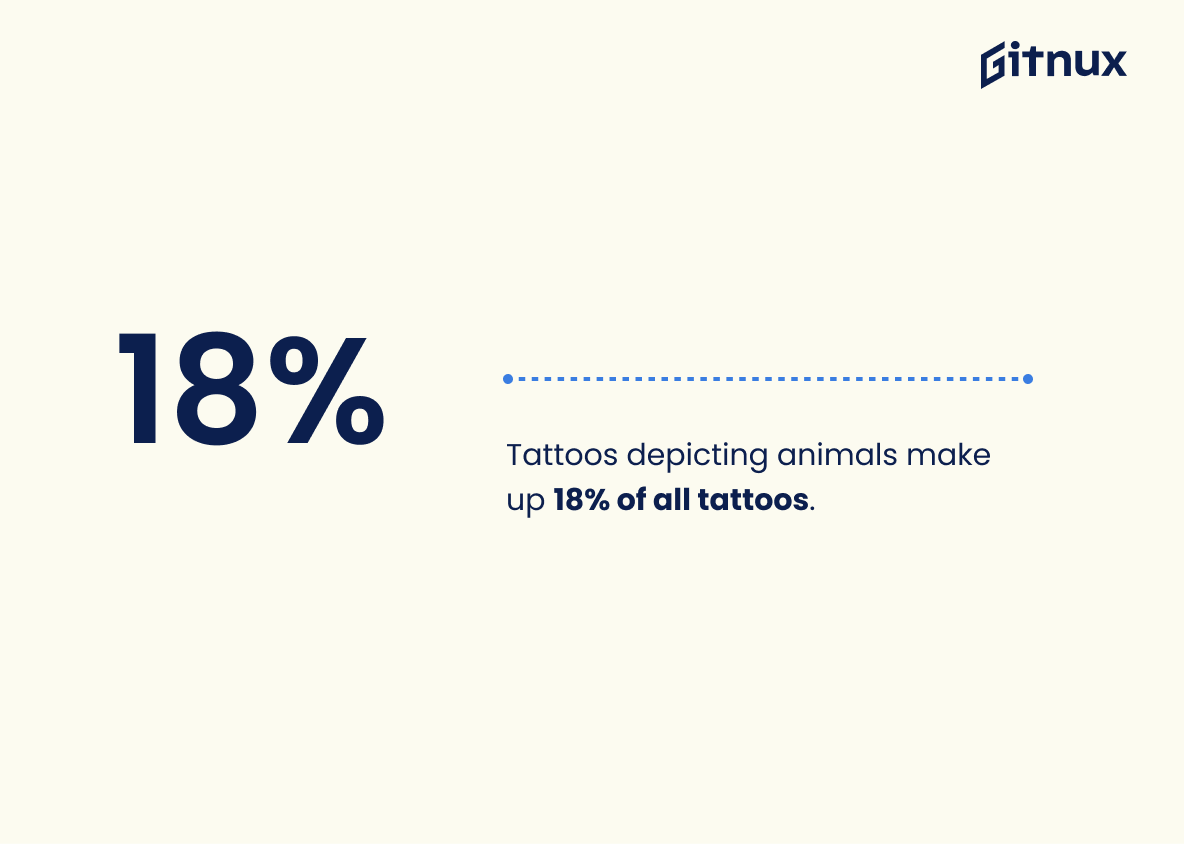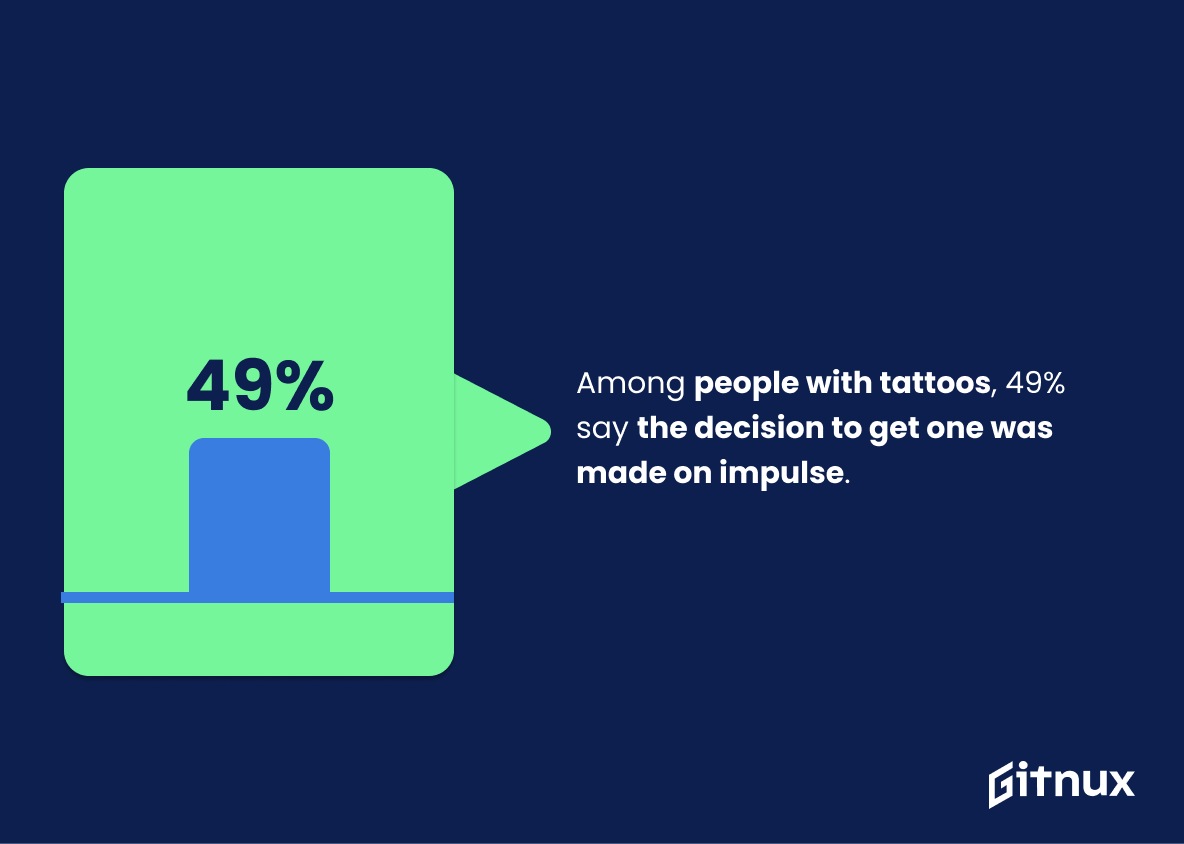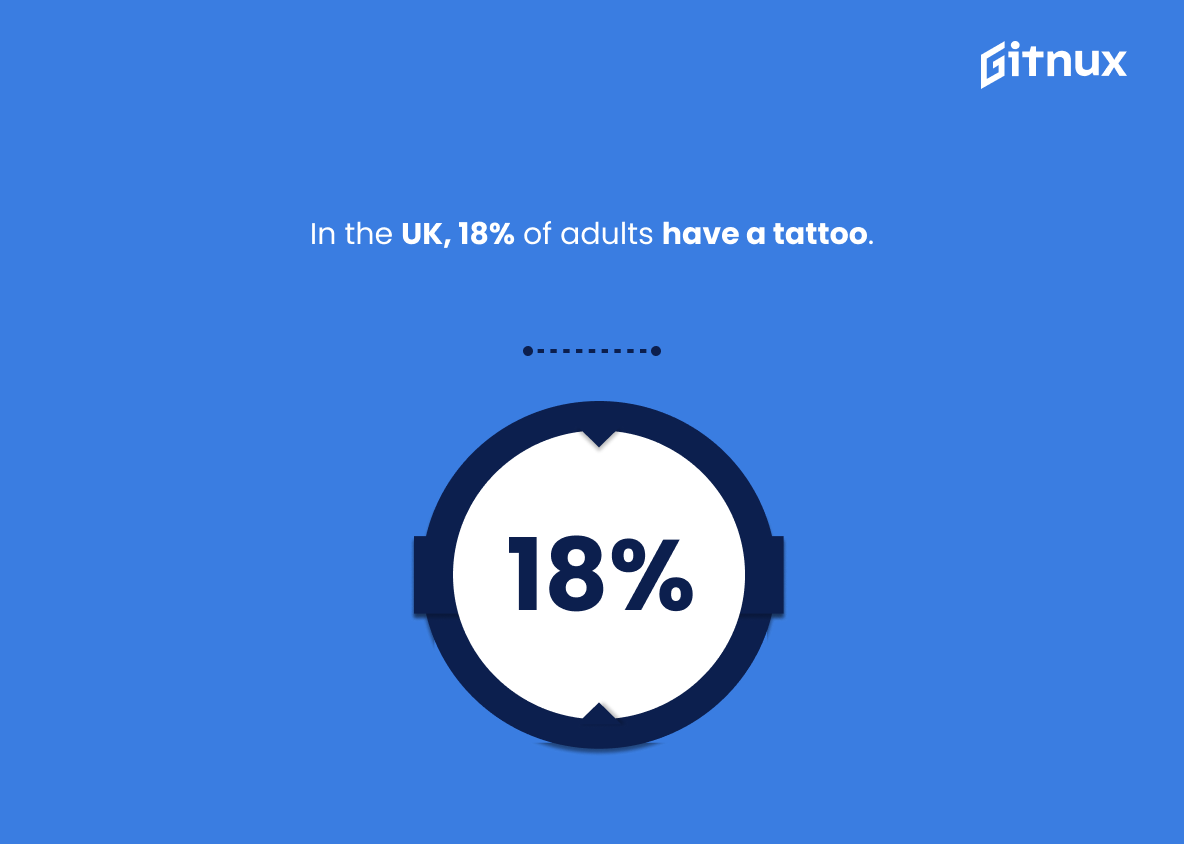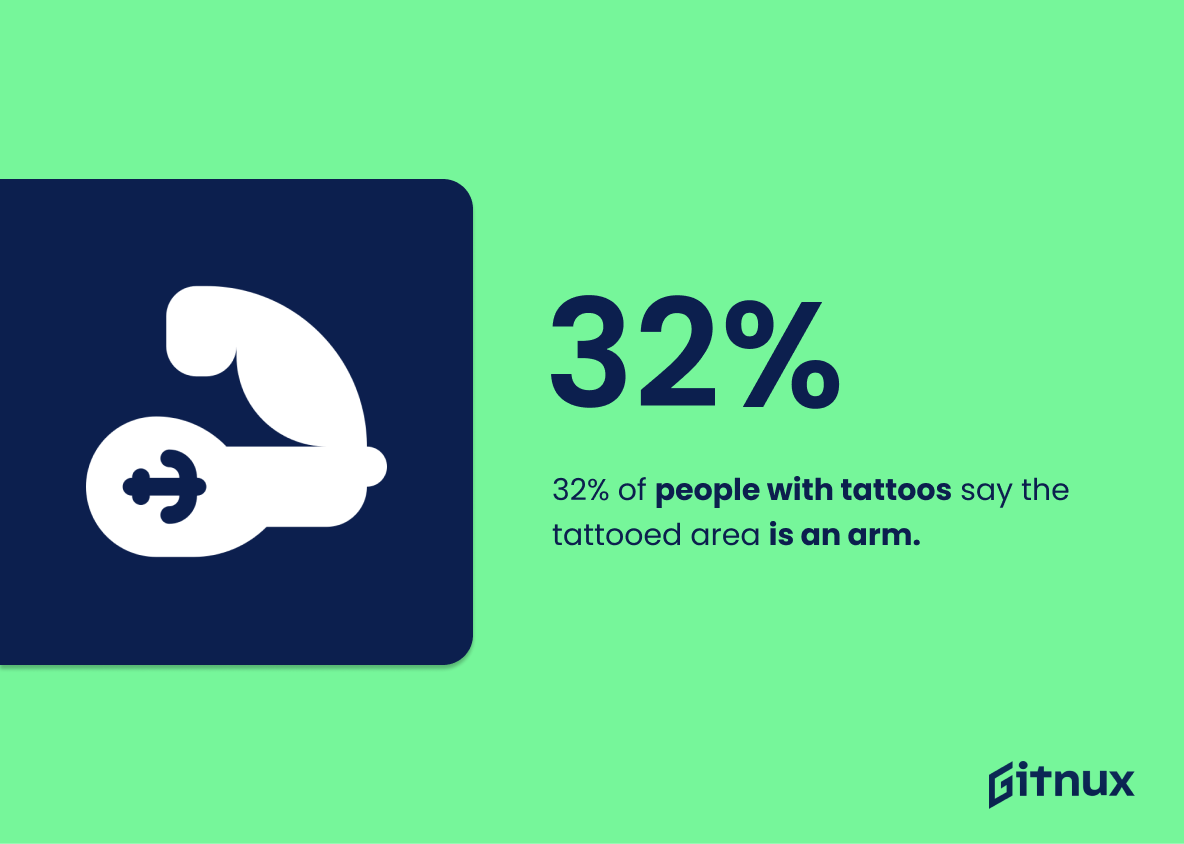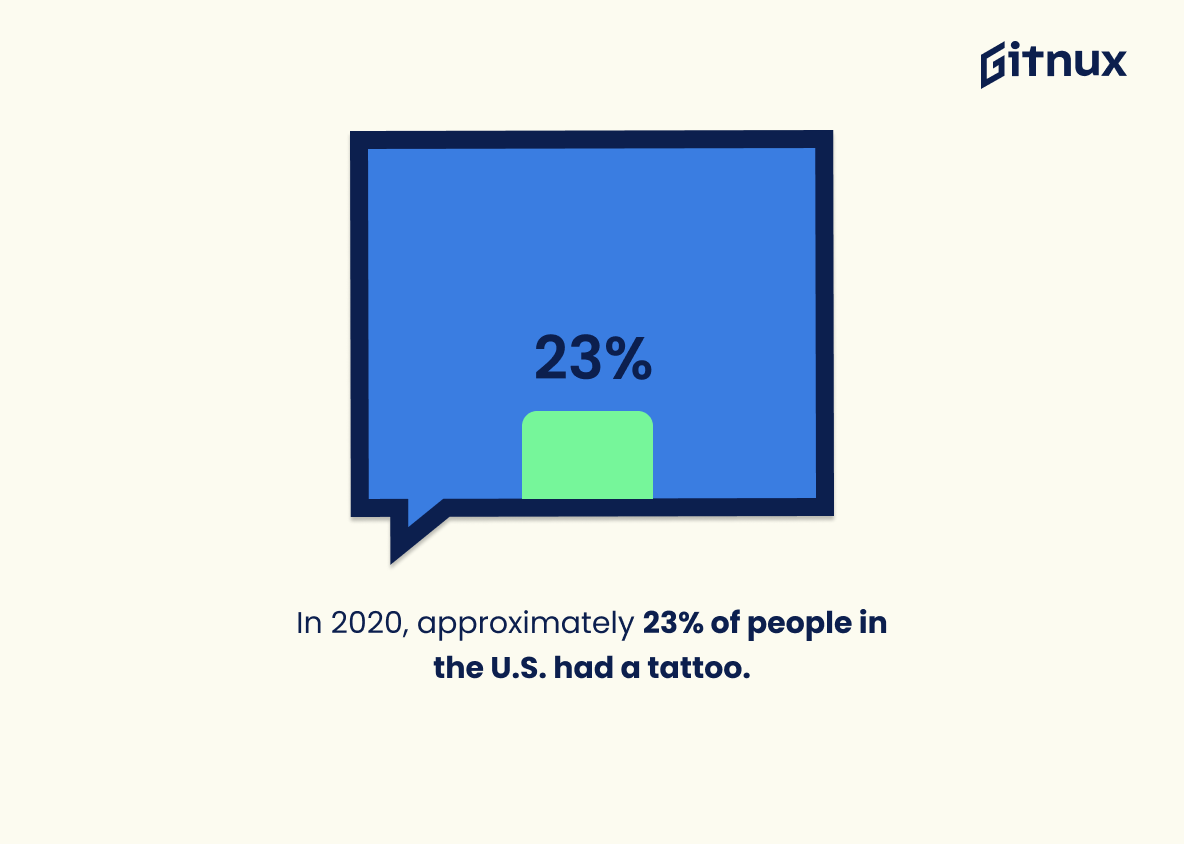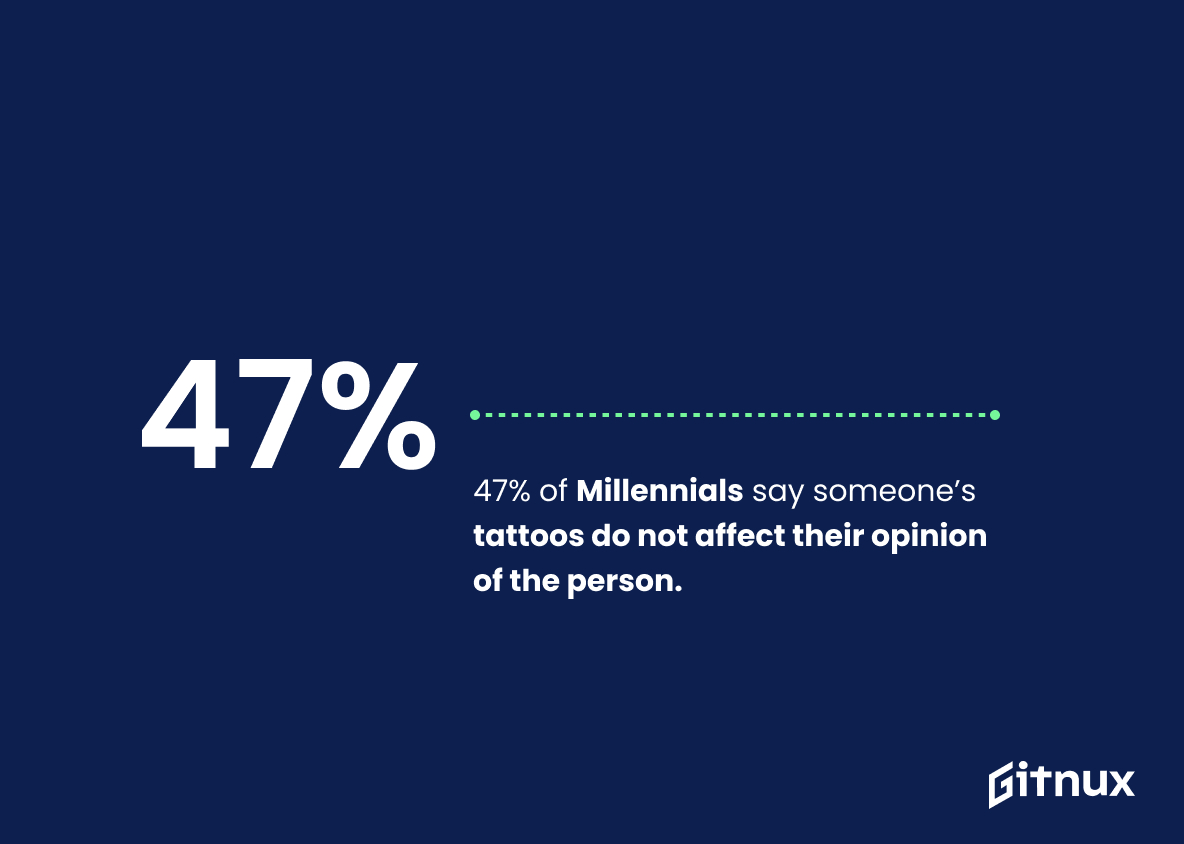Tattoos have become increasingly popular in recent years, with more and more people getting them to express themselves or commemorate special moments. According to statistics from the U.S., Australia, Europe, and beyond, tattoos are becoming a mainstream form of body art that is embraced by all ages and genders. Approximately 38% of adults aged 18-29 have at least one tattoo in the U.S., 30% aged 30-39, and 21% aged 40-49; nearly 1 in 4 Australians (24%) have a tattoo; 36% of U.S military servicemembers have tattoos; In 2015, the US Tattoo industry generated $1.65 billion in annual revenue; approximately 60 percent of all people who have tattoos want at least one more; over 139 million people in Europe has a tattoo ; among those with tattoos 70 percent had multiple ones while 20 percent had five or more ; 20 %of adults with tats regret their decision ,the global market for removal was valued at 3 .75 billion dollars showing growth as well as change preferences 58 % women compared 41 men animals make up 18%, 45 million Americans 49 say it was an impulse 32 arm 23 overall 50 considered 47 millennials 22 first 8 symbols 2014 . These stats show just how widespread this trend has become.
Popularity Of Tattoos Statistics Overview
36% of U.S. military servicemembers have tattoos.
This statistic is a testament to the prevalence of tattoos among U.S. military servicemembers, demonstrating that tattoos are a popular form of self-expression among those who serve in the armed forces. It is a powerful reminder that tattoos are no longer seen as taboo or unprofessional, but rather as a form of art and self-expression that is embraced by many.
In 2015, the U.S. tattoo industry generated $1.65 billion in annual revenue.
This statistic is a testament to the immense popularity of tattoos in the United States. It shows that the tattoo industry is thriving and that people are willing to spend money to get the tattoos they want. This statistic is an important indicator of the current state of the tattoo industry and provides insight into the growing trend of body art.
Approximately 60% of all people who have tattoos want at least one more.
This statistic is a telling indication of the popularity of tattoos. It suggests that the majority of people who have tattoos are so satisfied with their body art that they want to add more. This speaks to the fact that tattoos are becoming increasingly accepted and embraced by society.
Among people with tattoos, 70% have more than one, and 20% have more than five.
This statistic is a telling indication of the prevalence of tattoos in modern society. It shows that tattoos are no longer a rarity, but rather a common sight, with many people having multiple tattoos. This statistic is important to consider when discussing the popularity of tattoos, as it demonstrates that tattoos are becoming increasingly accepted and commonplace.
20% of adults with tattoos have some regret about their tattoos.
This statistic is a telling indication of the permanence of tattoos and the potential for regret that comes with them. It serves as a reminder that tattoos are a long-term commitment and should be considered carefully before getting one. This statistic is an important factor to consider when discussing the popularity of tattoos, as it highlights the potential risks associated with them.
The global market for tattoo removal was valued at $3.75 billion in 2020, showing the growth of tattoo culture as well as change in preferences.
This statistic speaks volumes about the current state of the tattoo industry. It shows that not only is tattoo culture on the rise, but that people are also increasingly open to changing their preferences when it comes to body art. This indicates that tattoos are becoming more accepted and embraced by society, and that people are no longer afraid to express themselves through body art.
58% of women have tattoos, compared to 41% of men.
This statistic is significant in the context of Popularity Of Tattoos Statistics because it reveals a clear gender disparity in the prevalence of tattoos. It suggests that women are more likely to get tattoos than men, which could be due to a variety of factors such as cultural norms, societal expectations, or personal preferences. This statistic could be used to further explore the reasons behind this gender gap and to better understand the popularity of tattoos among different genders.
Tattoos depicting animals make up 18% of all tattoos.
This statistic is a telling indication of the prevalence of animal tattoos in the tattooing world. It demonstrates that animal tattoos are a popular choice among those looking to get inked, and thus is an important piece of information to consider when discussing the popularity of tattoos.
Among people with tattoos, 49% say the decision to get one was made on impulse.
This statistic is a telling indication of the prevalence of tattoos in modern society. It suggests that tattoos are no longer seen as a permanent decision, but rather as something that can be done on a whim. This speaks to the increasing acceptance of tattoos in the mainstream, and could be used to illustrate the growing popularity of tattoos.
In the UK, 18% of adults have a tattoo.
This statistic is a powerful indicator of the prevalence of tattoos in the UK. It shows that tattoos are no longer a niche trend, but rather a mainstream form of body art that is embraced by a significant portion of the population. This statistic is important to consider when discussing the popularity of tattoos, as it demonstrates that tattoos are becoming increasingly accepted and popular.
32% of people with tattoos say the tattooed area is an arm.
This statistic is significant in understanding the prevalence of tattoos on arms. It provides insight into the body parts that people are most likely to get tattooed, which can be useful for those considering getting a tattoo or for those researching the popularity of tattoos. Additionally, it can help inform the design of tattoos, as it suggests that arms are the most popular area for tattoos.
In 2020, approximately 23% of people in the U.S. had a tattoo.
This statistic is a telling indication of the growing popularity of tattoos in the U.S. It shows that tattoos are no longer seen as a taboo or something that only certain people do, but rather a form of self-expression that is becoming increasingly accepted and embraced by a large portion of the population. This statistic is an important piece of evidence to include in a blog post about Popularity Of Tattoos Statistics, as it provides a clear indication of the increasing prevalence of tattoos in the U.S.
47% of Millennials say someone’s tattoos do not affect their opinion of the person.
This statistic is a telling indication of the changing attitudes towards tattoos in the Millennial generation. It suggests that tattoos are no longer seen as a sign of rebellion or a mark of deviance, but rather as a form of self-expression that is accepted and even embraced by many. This statistic is a reflection of the growing popularity of tattoos among Millennials, and it is an important piece of information to consider when discussing the current trends in body art.
Conclusion
From these statistics, it is clear that tattoos have become increasingly popular in recent years. In the U.S., 45 million people now have at least one tattoo and nearly 1 in 4 Australians also sport a tattoo. The global market for tattoo removal was valued at $3.75 billion in 2020, showing both the growth of this trend as well as changes in preferences over time. Tattoos depicting animals make up 18% of all tattoos while symbols and cultural designs comprise 8%. Additionally, 58% of women have tattoos compared to 41% of men and 32% say their first area they got tattoed was an arm. It appears that attitudes towards body art are becoming more accepting with 47% Millennials saying someone’s tattoos do not affect their opinion about them positively or negatively
References
0. – https://www.inkedmind.com
1. – https://www.statisticbrain.com
2. – https://www.yougov.co.uk
3. – https://www.reed.edu
4. – https://www.naahpusa.org
5. – https://www.image.ie
6. – https://www.finder.com.au
7. – https://www.globenewswire.com
8. – https://www.statista.com
